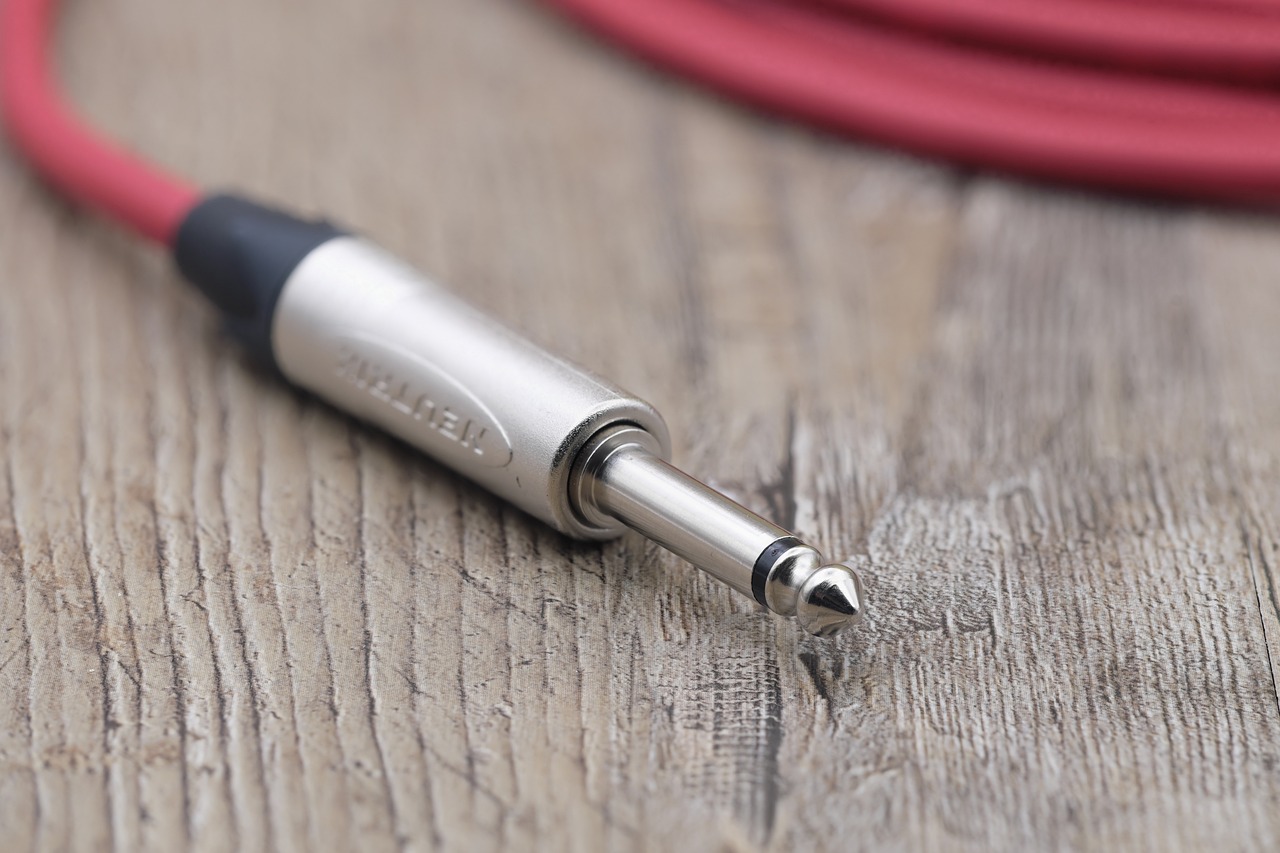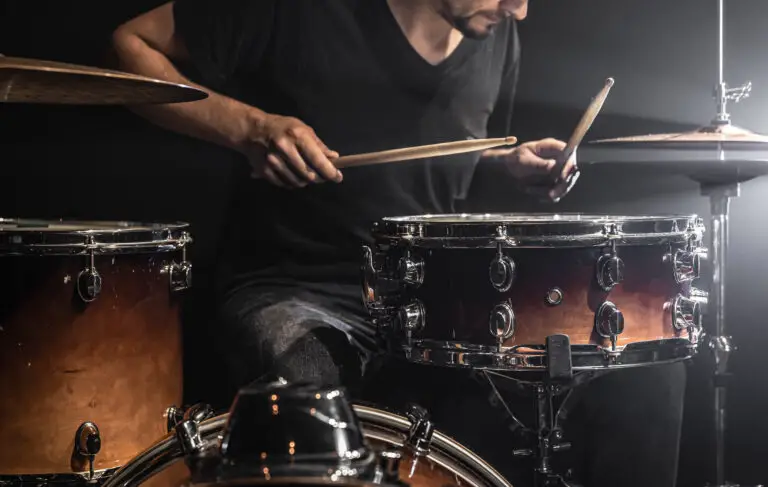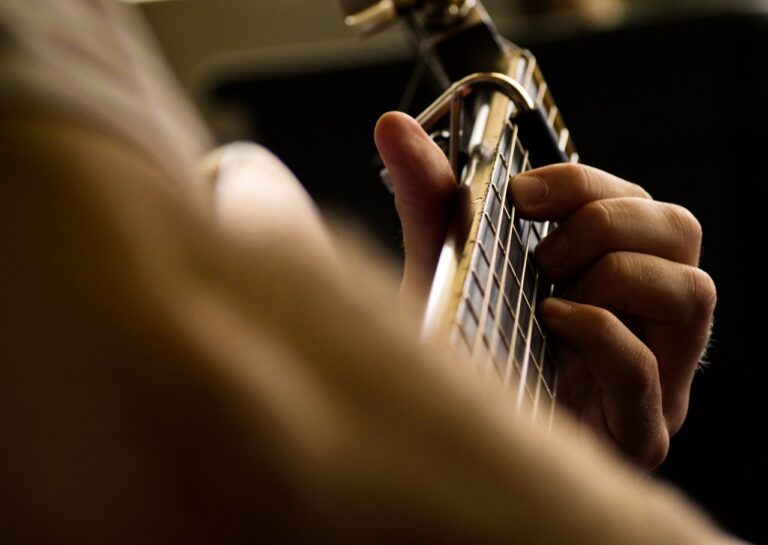How To Wrap A Guitar Cable Correctly
When it comes to your gear setup, a guitar cable can often be overlooked, but it’s actually a pretty important piece of a guitarist’s gear, Without proper care, guitar cables can get tangled fairly quickly, slowing you down and making each step of your practice, recording, and performing a bigger hassle.
Or even worse, you realize your cable has suffered irreparable damage due to improper care.
Not only does correct wrapping prolong the lifespan of your cable, but it also ensures that you have a smooth, hassle-free experience every time you set up or pack away your gear. So, how do you wrap a guitar cable correctly?
Why Properly Wrapping a Guitar Cable Is Important
Protecting the Internal Wiring
At first glance, a guitar cable may look simple and robust, but its internals are far more delicate. Typically, a cable comprises an inner core that carries the signal and an outer shield for grounding and interference protection. When you twist, kink, or wrap the cable too tightly, you risk damaging this inner core, which can lead to signal loss, increased interference, or even complete failure.
Sound Quality
Incorrectly wrapping a cable can also lead to a deterioration in sound quality. A damaged cable can introduce noise, hum, or intermittent cutting out of your sound, which is detrimental to both live performances and recordings. Some musicians may not even realize that their cable is the culprit behind their sound issues, leading to unnecessary gear changes or costly upgrades.
Lifespan of Your Cable
Properly wrapping and storing your cable effectively extends its lifespan, giving you more value for your investment. Cables can be expensive, especially those built to professional standards. Constantly replacing damaged cables can add up quickly, impacting your budget for other gear or musical necessities.
Ease of Use
There’s nothing more frustrating than needing to set up quickly for a practice session or gig and finding your cables in a tangled mess. Properly wrapped cables are easier to deploy, saving you time and hassle. They’re also easier to wind up when you’re done, making pack-up faster and smoother.
Preventing “Cable Memory”
When a cable is wrapped incorrectly over a long period, it can develop “cable memory,” meaning it will hold its coiled or kinked shape. This not only makes it more challenging to lay flat but can also exacerbate internal damage over time, making it more susceptible to failure.
Safety Concerns
A poorly stored cable is more likely to have exposed wires or damaged shielding, posing not just a risk to your sound but also to your safety. Damaged cables can result in electrical shorts, which can damage your equipment and pose a potential electrical hazard.
By understanding these factors and taking the time to wrap your cables correctly, you’re not just preserving your gear; you’re also ensuring the best possible sound quality and making your musical journey that much smoother.
How To Wrap A Guitar Cable Correctly
The Over-Under Technique is widely used in professional settings because it helps to prevent kinks and prolongs the life of the cable. It’s especially useful for cables that are used and stored frequently. Here’s a step-by-step guide to mastering this effective wrapping technique:
Initial Setup
Straighten the Cable Before Wrapping
Start by stretching out the cable to its full length. Run it through your hands to straighten it and remove any existing kinks or twists. This sets the stage for a smooth wrapping process.
Check for Any Damage or Kinks
Before wrapping, it’s important to inspect the cable for any visible damage like frayed ends or exposed wires. If you find any, it’s better to replace the cable rather than attempting to wrap and store it, as it could be a safety hazard or diminish sound quality.
The ‘Over’ Method
How to Do the First Loop
Grab one end of the cable in your hand, and make a loop as you would normally do, by turning your wrist clockwise. This first loop should have a diameter roughly equal to the length from your elbow to your fingertips.
Key Points to Remember
- Make sure the loop is not too tight; a soft curve is ideal.
- Try to maintain the diameter of the loop throughout the wrapping process for consistency.
The ‘Under’ Method
How to Execute the Second Loop
After the first loop, the trick is to alternate the direction of the loops. For the second loop, instead of turning your wrist clockwise, you’ll twist it counter-clockwise, allowing the cable to loop in the opposite direction.
Why It’s Important for the Cable’s Longevity
This alternating method helps to balance out the inherent twists that come from looping the cable, preventing the inner wiring from experiencing stress or damage. This is crucial for the long-term well-being of your cable, ensuring that it remains functional and maintains sound quality over time.
Alternating the Loops
Continuing the Over-Under Pattern
Continue this pattern of alternating ‘over’ and ‘under’ loops until the entire cable is wrapped. With each loop, make sure you are consistent with the loop diameter and tension.
Tips to Maintain Consistency
- Keep a mental note or use your fingers to measure the loop size to ensure consistency.
- Occasionally straighten the cable as you wrap to ensure no accidental twists are introduced.
- If possible, practice this technique slowly at first to build muscle memory, making it easier and faster as you get more familiar with it.
By mastering the Over-Under Technique, you not only extend the lifespan of your guitar cable but also ensure that it remains easy to use and free from kinks and damage.
For a more visual example, check out this helpful video from JustinGuitar
Common Mistakes To Avoid When Wrapping Guitar Cables
Even when you think you’re taking good care of your cables, you could inadvertently be causing damage or reducing their lifespan. Here are some of the most common mistakes people make when wrapping their guitar cables and how to avoid them:
Wrapping Too Tightly or Too Loosely
It may seem logical to wrap your cable tightly to keep it secure, but this is a common mistake. Wrapping too tightly can strain the internal wiring and the outer insulation, leading to quicker wear and tear.
On the other end of the spectrum, wrapping too loosely can create a tangled mess, making it difficult to unwrap the cable when you need it. Loose wrapping can also lead to kinks or twists that may eventually damage the cable.
The key is to find a balance: wrap the cable firmly enough to hold its shape, but not so tightly that it puts stress on the internal components. Aim for a loop diameter roughly equal to the length from your elbow to your fingertips, as this is generally a comfortable size for most people.
Ignoring the Natural Coil of the Cable
Many cables have a natural coil or “memory” based on how they were originally packaged or how they’ve been stored over time. Ignoring this natural coil and forcing the cable into an unnatural shape can lead to internal stress and quicker degradation.
Pay attention to how the cable naturally wants to loop. If you find that you’re meeting resistance or that the cable is twisting as you try to loop it, adjust your technique to work with, rather than against, the natural coil.
Twisting the Cable During Wrapping
Twisting the cable as you wrap it introduces stress and strain into the internal wiring, which can lead to quicker wear and tear, signal loss, or even cable failure.
Always be mindful of the cable’s orientation as you wrap it. Use the Over-Under Technique to alternate the direction of your loops, which will help balance out any twisting forces. If you notice the cable starting to twist, stop and straighten it out before continuing.
Final Thoughts
Properly wrapping your guitar cable is not just a matter of convenience; it’s an essential practice that affects the longevity and performance of your cable.
By employing the Over-Under Technique and being mindful of common mistakes, you can extend the life of your cables, ensure consistent sound quality, and save yourself time and frustration during setup and pack-down. Invest a little time in learning and practicing these techniques, and both you and your cable will enjoy a harmonious, long-lasting relationship.








